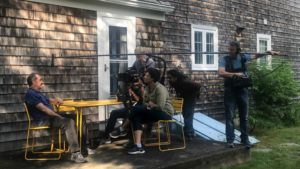
With only a few months left to the year, it’s fairly evident that while 2020 hasn’t produced nearly as many theatrical blockbusters as past years, it has been a pretty good year for documentaries. One filmmaker who has done quite well for herself despite the pandemic is Dawn Porter, who directed not one but two particularly timely and relevant docs, having to finish one of them in the midst of that pandemic.
John Lewis: Good Trouble is about the late Congressman John Lewis from Georgia who passed away in July, while The Way I See It is about White House photographer Pete Souza, who performed those duties under Reagan and then again under Obama. Both men have a particularly poignant reason to understand the current state of our country, Lewis having famously walked across the Edmond Pettus Bridge with Martin Luther King, Jr. in 1965 and Souza having a clear picture of what makes a beloved President.
Porter is a fantastic filmmaker, who not only has put together two of the most inspirational documentary films of the year, but also managed to release both movies during a year when the pandemic has made it very difficult for festivals to showcase important movies like these ones.
Below the Line spoke with the filmmaker last week for the following interview where we covered both films and the fantastic people she collaborated with to make them happen.
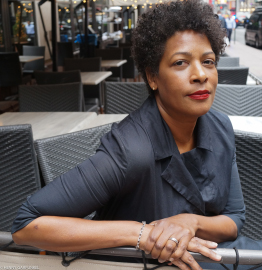
Below the Line: I’m particularly curious about the overlap between the two movies. When you have two documentaries coming out within a few months, you wonder how they might have influenced each other. I assume you started John Lewis: Good Trouble first, but did that lead directly into the Pete Souza documentary?
Dawn Porter: I was about halfway through the John Lewis one, which in documentary speak means we had a pretty good sense of how it was gonna play out, who we wanted to interview and schedule. We’d done a lot of the shooting — not all of it, but a lot of it — and then the opportunity to do the Pete Souza movie came along. I just felt that they spoke to each other. John Lewis’ career was all about inviting people to speak out, and then this is exactly what Pete was doing. In his 60s, he was becoming an activist, and I just thought, “What a perfect button to the John Lewis story.” They definitely speak to each other.
BTL: Had you met Pete while you were following Congressman Lewis around?
Porter: No, so Laura Dern is the producer on the movie, and it was her producing partner, Jayme Lemons, who became really, really interested in Pete and his photos. Jamie went to see his show, and it was really Jamie’s idea. She was like, “I think this would be a great film.” So they, along with the producer, Evan Hayes, invited me to come meet Pete. I didn’t even know them, but who doesn’t love Laura Dern? When they started talking about Pete and what he was doing, I could just see it. I could just see, like, this movie could be fun, it could be moving. Obviously, when we started, the situation that we’re in now was unimaginable. The movie certainly felt really moving and important before, but as the pandemic has gone on, and we’re so far from out of the woods, it’s just taken on more significance, even for me.
BTL: You seem to have been able to finish both movies in a good place. You don’t have the problem that Alex Gibney had with his recent movie Totally Under Control where he was just about finished with his movie and then something major changed.
Porter: No, that is true. My characters did not surprise me — they were consistent. [laughs]The world was a hot mess, but they were troopers, and they lived up to their reputations. I think for both John Lewis and for Pete Souza, they are providing a lot of hope for people. I think that’s another thing that both movies have in common. For me as a filmmaker, you have to be ready to swim in the material that you’re working on. You have to be mentally able to handle it, so both movies kind of provided the comfort I needed. For Pete, there’s somebody out there speaking up and saying, “Hey, this is not normal,” and then for John Lewis, that there are people in government that are good. They are trying to do their best. They’re not going to make every perfect decision, but they’re putting the people first, not themselves.
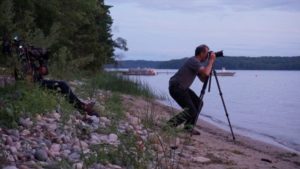
BTL: Unfortunately we lost him and Justice Ginsburg, and it wasn’t great losing them both in the same year. Had Pete’s Shade book come out already by the time you were talking to him and Laura Dern about making the movie?
Porter: Shade had already come out. He was about to do a second printing, because it was so popular. The opening thing of the movie is him looking at galleys for his next printing of Shade. So he was really thinking about what it means to have that book hit such a nerve with the American populace. It was really a kind of thing people needed. Sometimes, you just want to scream back at the TV, when untruths are being uttered, and Pete does that for all of us.
BTL: I actually bought the book after seeing the movie, which I rarely do. Making a movie about such an amazing photographer, is it hard to find the right cinematographer to film it? And having a subject who has such an eye himself, does he let you do your thing or does he micromanage how to get the best angles, etc?
Porter: No, he definitely did not do that. He’s a still photographer and isn’t really interested in moving images that much. This process of making a documentary was very new to him, and I think it was a little hard. He’s used to being behind the camera, but to your point, it was really important for me. I always pick cinematographers who I think are going to understand what my subject needs. Every subject needs something different. For Pete, he’s good at talking tech. He is very particular about images, so the cinematographers we had who are all excellent, but they were really able to geek out with him when needed, or to explain what was going on when he was interested. For me, the most important thing in cinematographers, in anybody on set, is that they have empathy and compassion, and that they understand how hard it is to let cameras follow you around, that they are able to melt into the background, and not be high maintenance. [laughs] The cinematographers we used, Clair Popkin and Keith Walker, Pete really liked them, too, which makes your shoots fun. We would shoot, and we made a nice dinner at Pete’s house. We had a lot of fun watching people’s responses to him, and we got to do some fun things. We filmed many of his presentations, but one we had a really big [set-up with] jibs, and that was super-fun for me as a creative to have multiple teams filming him.
BTL: Who were the cinematographers on Good Trouble?
Porter: That was also Keith Walker, and then also Tony Hardmon, and then the third person is Stefan Wiesen, because we were following the Congressman around, so we needed multiple folks.
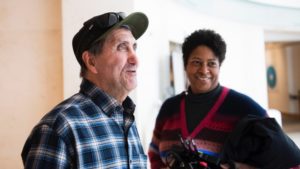
BTL: You had the same editor on both movies, so she must have been kept pretty busy.
Porter: I said to her, “I really want to edit this [i.e. The Way I See It] with you,” and what I love is that they are different styles, which I think is kind of cool for both of us. It’s Jessica Congdon, who also made the Dolores movie, which I loved and thought was a beautiful movie. I think for both of us, it was really fun to go from one movie to the next and have them be different stylistically and how they were put together. It didn’t feel like we were on repeat. We were kind of flipping the script a little bit and pushing ourselves, and I think we both had fun with that.
BTL: Was there a time when she was editing both movies at the same time?
Porter: No, Jessica is an incredibly disciplined editor. I started shooting the Souza doc, while we were editing the John Lewis doc, but got to “end, pencils down, we’re done” with John Lewis, and then she turned to the next one. So she just didn’t have a break. She just went right into the next project, and I’m working with her again now, so I love her.
BTL: I was just envisioning her having both movies on different hard drives and wondering which movie she was working on in any given day. Was she getting the footage as you filmed it to start editing?
Porter: The footage was coming in pretty fast and furious, because the one thing we really, really wanted to do was we wanted to get it out before the election. We kind of like put our heads down, a lot like Gibney. Our work is influenced by the need to have people be thinking about so many things as they pull that lever.
BTL: I also want to talk about the music, too, because that also helps differentiate the two movies – Tamar-kali on John Lewis and then you had a trio of composers on The Way I See It. I’m not sure if they worked together or separately but you have a legend in Composer Marco Beltrami, working with Brandon Roberts and Buck Sanders.
Porter: They worked together, and they were very different. I appreciate you noticing that, because I think that helped us set the style for each movie. For Tamar-kali, I asked her to write a modern spiritual, and she just kind of ran with that. Part of the goal for the John Lewis movie was to not have him only be remembered for 1965, to bring him into the present and show he’s an active legislator and working today and how his message is resonant today. She did the same with the music, which is tie a connection between the past and the present with the music. She looked up folk hands, like the ones from field hands in the South, she recorded those. She really leaned into his connection with the land, so she was very much in this historical thing.
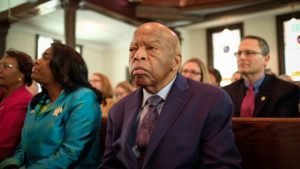
With The Way I See It, Marco is, as you say, a legend. That felt like, it’s the Presidency. It needs a big, grand situation, and a couple of poppy songs. They were very different styles, and that, again, was really enjoyable. Especially if you go from one thing to the next, you don’t want to repeat yourself. You want to break new boundaries, so that was why it was cool.
BTL: I’m not sure how much post you had to do on these movies in the past seven months before COVID put a stop to everything, but I was wondering about how that affected post, and then also having to promote two movies in the midst of COVID?
Porter: We did all of the sound mix, all of the color correct remotely. We finished the edit remotely. We did a number of interviews remotely, because we weren’t done. We all kind of went into quarantine – I moved East. Just everything changed, and everybody scattered to different places. Jessica and I were used to editing remotely, because I was living in San Francisco, and she lives an hour and a half from San Francisco. We would work remotely three days a week, and then she would come in two days a week. Because we knew each other really well and because we were used to this online editing, we were fine. The finishing was challenging. Relationships matter in filmmaking, and I used the same sound mixer I use at Skywalker Ranch, Chris Barnett. I love him, and he also knows my style and what I gravitate to. When we’re doing the sound mix, usually I’d go sit with him and we’d go through the movie a minute at a time, and we’d talk about it. I actually frickin’ love that process. I just love sitting next to him, I love seeing it on the big screen — he’s just really meticulous about the mix, and we just didn’t have that. I wasn’t gonna fly across country for this. He did a lot of it, his first and second passes, before I even heard a thing, and then we really focused on some of the smaller, finer details when we got together. He said, “If you get Apple TV IV, I can real-time do the movie” so then we did our normal kind of thing with about half the time in person, so that worked. And then for our colorist, Leo Hallal is a good friend, and he said, “Get a calibrated iPad, you can do it” so that’s what we did. But we had to do a lot of it remote. We had to send Pete a calibrated iPad, and it makes a difference when you have a muscle like Focus Features behind the movie. They were incredibly flexible and supportive. “We do not want to push. We want to stay on schedule. We want to get it out,” and they backed us, and we were able to do it.
The Way I See It will continue to air on the MSNBC App for the rest of this week, and then will begin streaming on Peacock and iTunes starting October 23. John Lewis: Good Trouble is available On Demand, and you can even watch it while supporting your favorite local arthouse or film festival.





